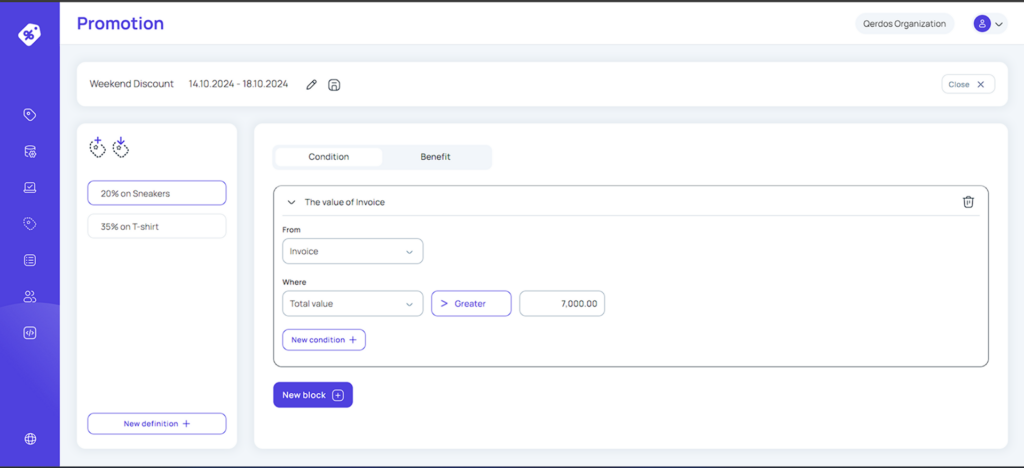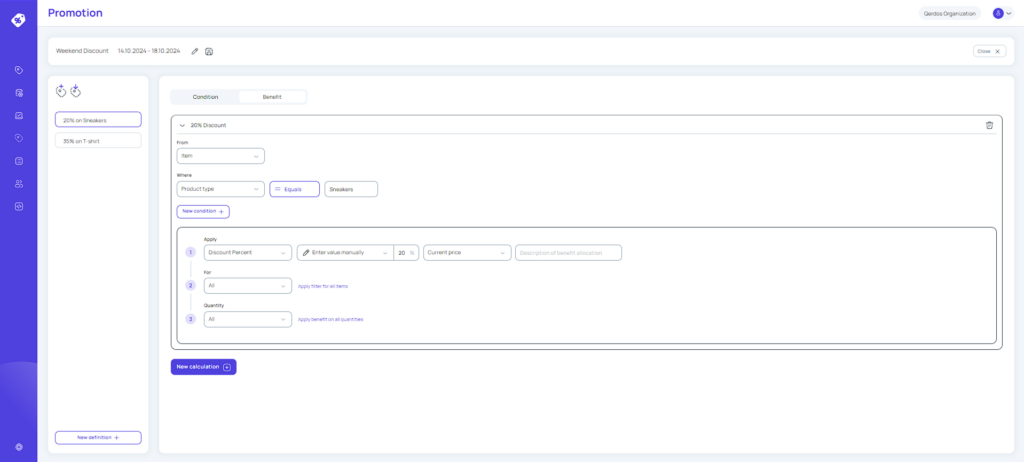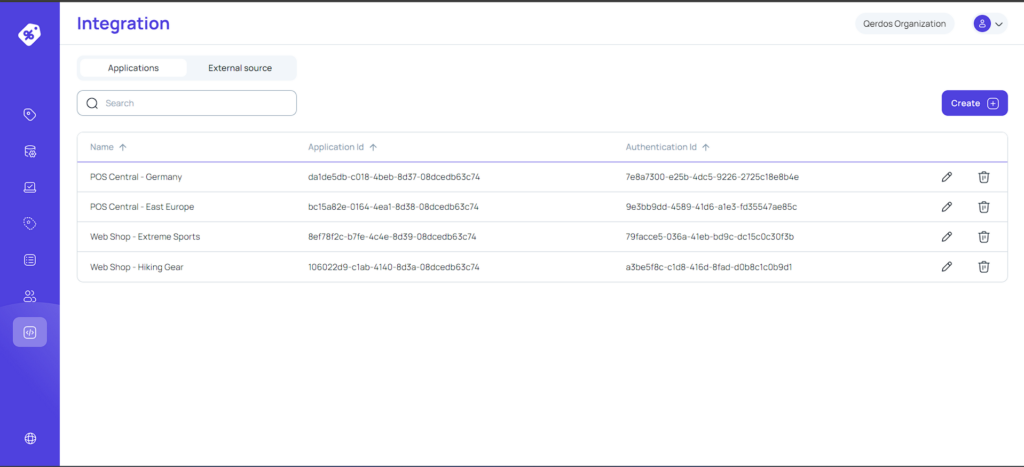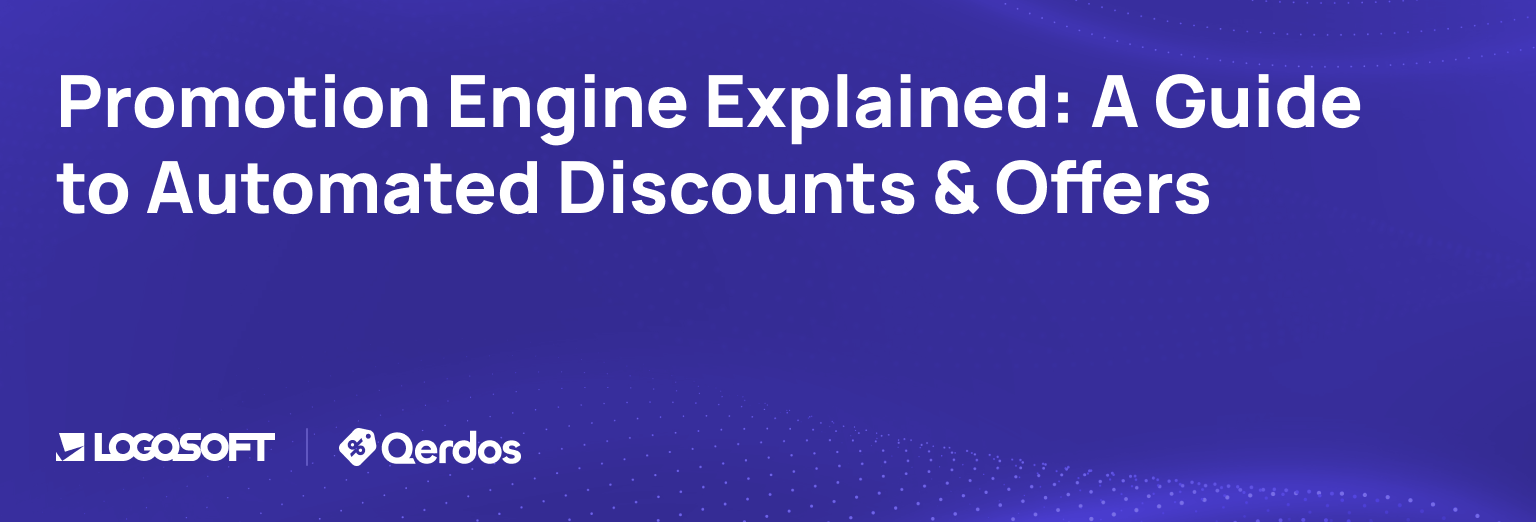The most competitive market these days is the retail one, and if you aim to sell, you’ll have to know what to tell. Your customers expect to be engaged, and the best way to accomplish that when it comes to retailing is through well-planned promotions. These will help you attract new customers, but also retain existing ones and increase brand loyalty and average order value.
What’s problematic here now that there are countless conditions, specific users and products themselves, is manually setting up and tracking promotions. And that’s where a promotion engine comes into play—serving to automate the process of applying discounts, offers, and loyalty rewards. Advanced promotion engines use rule-based automation and provide customization, targeting and real-time execution.
Read on to find out how promotion engines work and what are their key features and benefits. We will cover different types of promotions, automation advantages, and best practices for using a promotion engine effectively in order to help you understand how automated promotions can and will optimize your sales and improve customer experience.
Understanding Retail And eCommerce Promotion Engines
By definition, a promotion engine is a dedicated software helping marketing teams handle all kinds of promo campaigns. Retail promotion engine uses predefined rules to eliminate the need for manual discount applications.

These predefined rules can refer to cart-based rules, such as setting the engine to apply discounts when a cart meets certain conditions, for example, “Get 5% off when spending over $50.” They can also refer to predefined criteria such as time-sensitive, customer-segmented, or loyalty-based offers.
The most important benefit of these engines is the automatic application of discounts thanks to the integration with the checkout system, enabling you to avoid manual coupon entry. In this way, customers instantly see the final discounted price, which does a huge improvement on the shopping experience and reduces cart abandonment.
Why Retail Businesses Need a Promotion Engine
Let’s break down the whys into three most important becauses.
1. Enhancing Customer Experience
There are many ways a promotion engine can add a personal touch to increase engagement and foster brand loyalty, improving the overall shopping experience. Some can personalize offers and customize discounts based on customer preferences, purchase history, and browsing behavior. For example, a returning customer who frequently buys running equipment can receive a personalized 10% discount on their favorite brand.
Moreover, a promotion engine can encourage repeat purchases with targeted promotions, such as exclusive discounts for returning customers, reward-based promotions, or birthday deals. Be that as it may, the point remains the same—to make customers feel valued and increase retention rates and repeat sales thanks to that feeling.
2. Increasing Sales and Conversions
Retail and eCommerce promotion engines allow you to apply strategic discounts, such as time-sensitive offers like holiday promotions, that drive urgency and FOMO (fear of missing out), and in that way encourage immediate purchases. Let’s say your best friend’s favorite perfume brand offers a limited-time 20% discount for the first 100 customers during Christmas break—chances are, your friend is getting that perfume as a Christmas gift.
What’ll also improve conversions is utilizing a promotion engine to recommend complementary products (cross-selling) or higher-value alternatives (upselling). An example of the first would be offering 10% off a laptop sleeve when purchasing a laptop, while the example of the second could be an offer to upgrade to a Pro version for just $50 more and receive an extended warranty. These automated strategies will help you increase average order value (AOV) and maximize revenue.
3. Streamlining Operations
Third, but easily the most important benefit is the time-efficiency of these engines. Manual discounting is way too time-consuming and prone to errors for our current reality. Automating price adjustments and ensuring the correct discount applies instantly at checkout reduces human error and abuse by personnel, improving efficiency incomparably, and freeing up staff to focus on other tasks.
Talking about streamlining, in addition to ensuring consistent and error-free promotions, these engines ensure them across multiple sales channels. Whether your business sells via its website, mobile app, or physical store, an advanced promotion engine allows for consistent pricing and discounts across all platforms. As inconsistencies in promotions can lead to customer frustration and abandoned carts, this is also once again beneficial for customer experience.
Key Features of A Retail Promotion Engine
A promotion engine operates on predefined rules that dictate how and when discounts apply. Businesses can set conditions like cart value, product category, user type, or purchase frequency to trigger promotions automatically.
Examples of Rule-Based Promotions
- “Buy 1 Get 1 Free” (BOGO) → Encourages bulk purchases by offering anextra item for free.
- “10% Off for Orders Above $100” → Incentivizes customers to increase theircart value.
- “Holiday Flash Sales” → Creates urgency with time-limited discounts.
However, rule-based discounting isn’t the only feature worth mentioning. Let’s explore them all.
Dynamic Pricing Adjustments
A promotion engine automatically updates the price based on applied discounts and cart contents. For example, if a customer adds a second item eligible for a bundle discount, the cart reflects the adjusted price instantly.
Discounts can be tailored for different customer groups:
- New users → 15% off on the first purchase.
- Loyal customers → Exclusive member-only discounts.
- Wholesale buyers → Volume-based price reductions.
Stacking and Exclusions
Some promotions allow stacking (applying multiple discounts together), while others have exclusion rules to prevent unintended losses. For example, a customer loyalty discount (10%) + a seasonal sale discount (15%) can apply together. However, a “Buy 1 Get 1 Free” offer might exclude additional coupon usage.
A promotion engine ensures the correct order of discount applications when multiple promotions exist.
Multi-Channel Compatibility
A robust promotion engine ensures that discounts are consistent across all sales channels, including:
- eCommerce websites → Standard cart-based promotions.
- Mobile apps → App-exclusive deals or push notification-based offers.
- Physical stores (POS systems) → QR code-based or membership discounts.
- Social commerce (Instagram, Facebook Shops, TikTok) → Platform-specificpromo codes.
Advanced Targeting and Personalization
Promotion engines can often leverage data-driven insights to personalize discounts, increasing engagement and conversions.
Examples of targeted promotions:
- First-time shoppers → 20% off welcome discount.
- Abandoned cart recovery → Automated email with a 10% discount.
- Location-based promotions → Free shipping for customers within acertain region.
Types of Retail Promotions Handled by a Promotion Engine
A promotion engine supports various discount structures that help businesses attract customers, boost conversions, and increase order values. Let’s go over the most common types.

1. Percentage-Based Discounts
These are known as flat discounts (e.g., “20% Off Sitewide”) and are one of the most common and effective discount types in retail. They can be applied to an entire store, a specific category, or select products. Flat discounts are often used during seasonal sales, holiday promotions, or exclusive member deals.
An example of a flat discount could be a fashion retailer offering “20% off all winter clothing” for a limited time to clear out seasonal stock.
2. Fixed Amount Discounts
These refer to offering specific dollar amounts (e.g., “$5 Off on Orders Above $50”). Instead of a percentage, a fixed-value discount reduces the order total by a set amount. This aims to encourage higher spending to reach the discount threshold and is typically used for first-time purchases or VIP customer rewards.
For example, an electronics store could offer “$10 off purchases over $100” to increase average order value (AOV).
3. Free Shipping Offers
Free shipping is a major incentive for online shoppers. Businesses use it to increase cart value by setting a minimum spending threshold. A promotion engine can automatically apply free shipping based on:
- order value (“Free shipping on orders over $75”);
- customer location (“Free shipping for local customers”);
- product type (“Free shipping on all electronics”).
For example, an online bookstore can offer “Free shipping on orders above $50” to encourage bulk purchases.
4. Buy One, Get One (BOGO) Deals
BOGO discounts encourage bulk buying by offering free or discounted additional products. They can be customized for different variations:
- “Buy 1 Get 1 Free” (BOGO 100%)
- “Buy 2 Get 1 at 50% Off” (BOGO 50%)
- “Buy X, Get Y Free” (mix-and-match discounts)
A promotion engine automatically applies the discount when conditions are met. For example, a cosmetics brand could run a “Buy 1 Lipstick, Get 1 Free” promo, automatically discounting the second item at checkout.
5. Tiered and Volume-Based Discounts
These refer to discounts increasing with order value (e.g., “Buy More, Save More”). They can encourage larger purchases by offering increasing discounts based on:
- Cart total → (“Spend $100, get 10% off; Spend $200, get 15% off”)
- Quantity → (“Buy 3+ items, get 10% off; Buy 5+, get 20% off”)
- Membership levels → (Silver members get 5% off, Gold members get10% off)
For example, a pet supply store could have an offer saying “Buy 2 bags of cat food get 10% off; Buy 3, get 15% off” to boost bulk orders.
6. Coupon and Promo Codes
Customizable codes can be used for specific campaigns, customers, or marketing channels. These can be one-time use, limited to certain users, or applied storewide. This type of promotion is often integrated with email marketing, influencer campaigns, or referral programs.
An example could be a fitness brand offering a “WELCOME15” promo code for new customers, giving them 15% off their first order.
How a Promotion Engine Integrates with eCommerce Platforms
A promotion engine needs to seamlessly integrate with different eCommerce platforms to ensure smooth discount applications, pricing updates, and checkout adjustments.

Integration with Shopping Carts and Checkout Systems
- Pre-built integration: Many eCommerce platforms natively supportpromotion engines, allowing businesses to set up rules easily.
- Automatic discount calculation: The engine works with the shopping cart toapply discounts before checkout, ensuring a smooth user experience.
- Compatibility with different payment gateways: Ensures that discounts arereflected in final transaction values, preventing pricing discrepancies.
A WooCommerce store, for example, can use a promotion engine to apply bulk discounts at checkout without requiring manual input from the customer.
API-Driven Promotions for Custom Stores
Businesses with custom-built eCommerce sites need API-based promotion engines. APIs (Application Programming Interface) are what allow developers to customize discount rules, eligibility criteria, and pricing strategies without relying on platform-specific tools. This enables real-time discount applications, even for dynamic product catalogs.
An enterprise retailer with a headless commerce setup uses APIs to automatically adjust prices for loyalty program members based on their past purchases, for example.
Omnichannel Integration
Omnichannel integration ensures promotions apply across all sales channels, including:
- Online stores
- Mobile apps
- Physical retail locations (POS systems)
- Social commerce (Facebook, Instagram, TikTok Shops)
This keeps pricing and discounts synchronized, so customers get the same offers whether they shop online or in-store.
For example, a fashion brand that offers a “Buy 2, Get 1 Free” deal, ensures the same promotion applies both in their physical stores and on their eCommerce website.
Challenges in Implementing a Promotion Engine
While a promotion engine brings massive benefits, implementing it comes with certain challenges. Rule management is not an easy task, and conflicts may arise when balancing multiple overlapping promotions. It’s crucial to use hierarchical rule management to define which discounts apply first, and to implement exclusion rules in order to prevent unintended stacking.
Real-time processing of discounts for high-traffic stores may pose another challenge, as high server loads may cause delayed discount calculations. That emphasizes the importance of scalable promotion engines and the implementation of caching mechanisms for frequently used discount rules.
Last but not least, discount fraud is a big concern for retail businesses. Common abuse cases involve customers stacking promo codes when not allowed, sharing single-use codes, or, most commonly, exploiting loopholes in return and refund policies. That’s why one-time use coupons should be enforced, and discounts restricted based on user profiles. AI could help significantly in fraud detection in the near future.
Future of Retail And eCommerce Promotion Engines
A well-structured promotion engine is becoming a necessity for a competitive retail reality. To streamline operations and drive conversions, but most importantly, enhance customer experience, you need to leverage automated, rule-based discounts.
The future of promotion engines announces even greater efficiency and intelligence, promising to reshape the applications of discounts and offers through AI and machine learning, predictive analytics, and no-code configurations.
AI-powered systems will replace generic discounts with tailored offers that boost engagement and retention, while predictive analytics will enable businesses to anticipate demand and strategically time promotions for maximum impact. Additionally, the rise of no-code solutions will make it easier than ever to create and manage complex promotions without technical expertise, ensuring even faster implementation, fewer errors, and greater flexibility.
As the marketplace evolves, businesses that embrace these innovations will undoubtedly gain a decisive competitive edge.



Leave a Reply